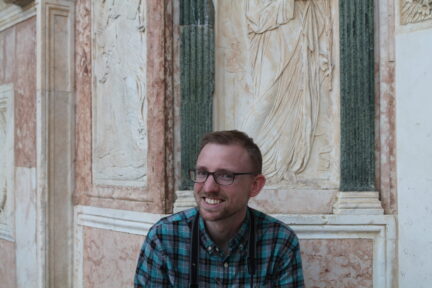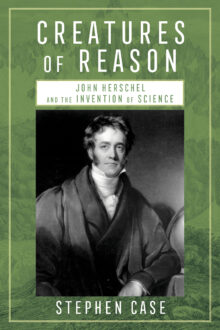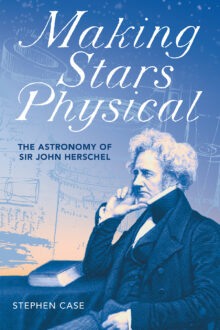
Stephen Case
Stephen Case is a professor in the Department of Chemistry and Geosciences at Olivet Nazarene University, where he is also director of the University Honors Program. He is the author of Making Stars Physical: The Astronomy of Sir John Herschel and coeditor of the Cambridge Companion to John Herschel.
Creatures of Reason
John Herschel and the Invention of Science
In his lifetime, John Herschel was Britain’s best-known natural philosopher, a world celebrity, and arguably the first modern scientist of the generation in which the term itself was invented. The polymath son of William Herschel, discoverer of Uranus and constructor of the world’s largest telescopes, Herschel took highest honors as a student at Cambridge, conducted groundbreaking work in chemistry and optics, helped establish a mathematical revolution, extended his father’s astronomical surveys to the entire sky, and wrote the popular texts by which a generation of readers learned what it meant to do science. Along the way, Herschel gave to natural philosophy the contours of modern science, defining scientific theories as “creatures of reason rather than of sense.” His creatures of reason could also refer to a new type of scientific practitioner: the natural philosopher beginning to transition into the modern scientist. With this book, Stephen Case encompasses Herschel’s impact on mathematics, chemistry, geology, and optics as well as the organization of science and its relation to government, society, and culture, revealing Herschel’s transformation of the practice of science itself. Drawing on his unpublished manuscripts, correspondence, and notebooks from archives in London, Cambridge, and Austin, this book contributes significantly to our understanding of the early life and career of the nineteenth century’s most influential natural philosopher.
Making Stars Physical
The Astronomy of Sir John Herschel
Making Stars Physical offers the first extensive look at the astronomical career of John Herschel, son of William Herschel and one of the leading scientific figures in Britain throughout much of the nineteenth century. Herschel’s astronomical career is usually relegated to a continuation of his father, William’s, sweeps for nebulae. However, as Stephen Case argues, John Herschel was pivotal in establishing the sidereal revolution his father had begun: a shift of attention from the planetary system to the study of nebulous regions in the heavens and speculations on the nature of the Milky Way and the sun’s position within it.
Through John Herschel’s astronomical career—in particular his work on constellation reform, double stars, and variable stars—the study of stellar objects became part of mainstream astronomy. He leveraged his mathematical expertise and his position within the scientific community to make sidereal astronomy accessible even to casual observers, allowing amateurs to make useful observations that could contribute to theories on the nature of stars. With this book, Case shows how Herschel’s work made the stars physical and laid the foundations for modern astrophysics.


